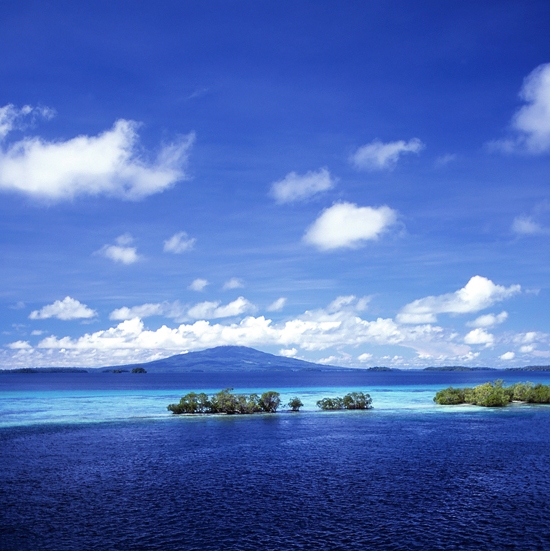Protect Planet Ocean Now
With only one per cent of the world’s oceans under protection, countries are far behind the 10 per cent target promised for 2010. A greater political will and a change in the way we manage our marine capital are needed now to preserve the Earth’s oceans for generations to come.

Photo: Stuart Chape
This month Chile announced the setting up of a large marine reserve around Sala y Gómez island in the Pacific. However, current global plans for increasing the number of marine protected areas fall far short of what’s needed to save the world’s oceans, according to a new report from IUCN, The Nature Conservancy and the United Nations Environment Programme.
“Keeping our life support system healthy is what is at stake here and now,” says Carl Gustaf Lundin, Head of IUCN’s Marine and Polar Programme. “The creation of hope spots - special places in the ocean that need special protection - will prove that the world cares about two-thirds of our planet.”
Launched today at the UN Convention for Biological Diversity, Global Ocean Protection: Current Trends and Future Opportunities - a new book by IUCN, The Nature Conservancy, UNEP and various other partners* - looks at the state of our oceans and offers solutions that will restore our marine resources while meeting future human demands. More than 30 leading conservation authors provide the best science and policy available to encourage countries to take actions that go beyond the establishment of individual protected areas.
A total of 5,880 marine protected areas exist today, mostly in coastal areas. However, current protected areas do not represent all regions, species and habitats that are important for conservation, and there are significant financial and human capacity restrictions. One way of achieving a dramatic improvement in marine conservation, while integrating food security, human welfare and health, is through proper management and spatial planning of the ocean, according to the publication.
Traditional management of marine resources is another way of responding to escalating threats to the health of oceans.
“Countries cannot afford to ignore the call for saving our oceans this time,” says Manny Mori, President, Federal States of Micronesia. “Without effective protected areas at the village or community level, there can never be a successful global ocean protected area.”
Spokespeople:
Carl Gustaf Lundin, Head, IUCN’s Global Marine and Polar Programme, e carl.lundin@iucn.org
Dan Laffoley, Marine Vice-Chair of IUCN’s World Commission on Protected Areas,
e dan.laffoley@naturalengland.org.uk
Francois Simard, Deputy Head and Senior Advisor for Fisheries, efrancois.simard@iucn.org
Caitlyn Toropova, IUCN Marine Protected Areas Coordination Officer, e caitlyn.toropova@iucn.org
For more information or to set up interviews, please contact:
• Nicki Chadwick, IUCN Media Relations Officer, m +41 79 528 3486 (Swiss), +81 80 3462 3552 (Japan) e nicki.chadwick@iucn.org
• Brian Thomson, IUCN Media Relations Manager, m +41 79 721 8326, e brian.thomson@iucn.org
To read the full report visit: https://www.iucn.org/downloads/global_ocean_protection_report.pdf
*Additional partners include: WCMC, UNU-IAS, Agence des aires marines protégées and The Wildlife Conservation Society



